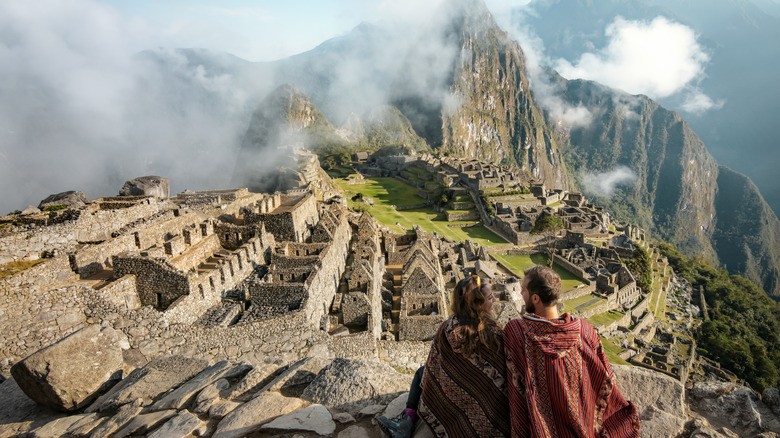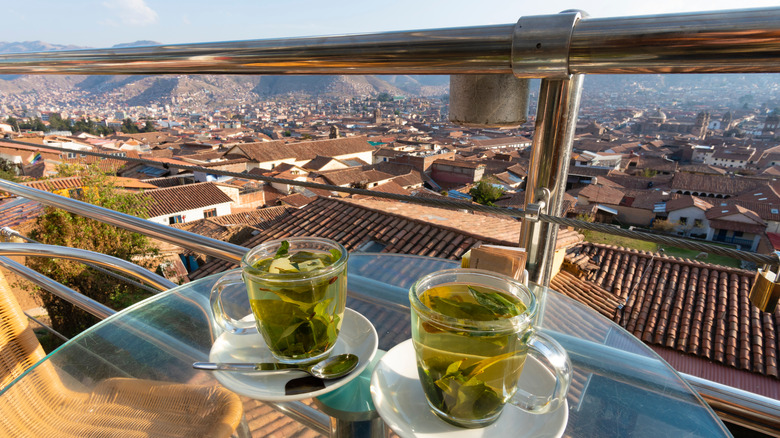The Dangerous Reason Tourists Should Never Hike Machu Picchu On The First Day There
Machu Picchu, one of the most iconic and breathtaking archaeological sites in the world, is a must-see destination for tourists visiting Peru. However, as tempting as it may be to hit the ground running and hike up to this majestic ancient city as soon as you arrive, doing so on your first day could be very dangerous. The main reason? Altitude sickness. This unpleasant condition can turn what should be an awe-inspiring adventure into a serious health issue that could ruin your entire trip. So hold your horses and wait a while; Machu Picchu isn't going anywhere. Here's why.
@wanderlicious.adri Everything you need to know about Machu Picchu!!! #machupicchu #peru #travel We booked with Action Treks Peru! Why does nobody on social media talk about what the hike to Machu Picchu is actually like? Here's 7 things I wish I was told before starting the 1 day trek / 2 day tour to Machu Picchu. First up, you need to book in advance, they ONLY let 250 on the trail for the 1 day hike, and Secondly, the wakeup call is super early at like 2am, and you want to be one of the first people to catch the 5am train. I thought the hike to Machu Picchu was gonna be super tough and just like a constant uphill battle, but to be honest, it wasn't bad AT all AND I did it with the flu. Yes, there are some bits with stairs, and yes, it's a long day of walking, but most of the track was very gentle slopes, and our guide made it super easy because every 10-15 minutes he would stop and show us really cool stuff like other Inca sites along the way. And by the way, you miss all these other incredible Inca sites if you don't do the one day hike! Definitely DONT book your Machu Picchu tour on your first day: YOU MUST acclimatise to the altitude for at least 2 days in Cusco – see my other video for more. You also get to photograph Machu Picchu from different viewing platforms that you don't get to see if you take the bus up! 7. At the end of your days hike, you stay in a fairly bougie hotel with THE BEST VIEW and went back to Machu Picchu for a full day tour and honestly, you'll have the best time! Follow for more recommendations as I travel the world, next up, the Galápagos Islands!
Machu Picchu sits at a relatively moderate altitude of 7,972 feet above sea level. However, you don't just immediately land right there (hint: there's no airport on-site). Travelers first arrive in Cusco — the historic capital of the Inca Empire — which is the starting point for most Machu Picchu treks. Here's the kicker: Cusco lies at an even higher elevation of 11,152 feet — a third of the height of Mount Everest. This high altitude is where the danger comes into play. For those unaccustomed to such elevations, altitude sickness — also known as acute mountain sickness (AMS) — is a real risk.
Altitude sickness occurs when your body doesn't have enough time to adjust to lower oxygen levels at high altitudes. Common symptoms include headaches, nausea, dizziness, fatigue, and shortness of breath. In severe cases, it can lead to life-threatening conditions like high-altitude pulmonary edema (HAPE) or high-altitude cerebral edema (HACE). The onset of these symptoms can happen quickly, and hiking or exerting yourself physically before your body gets the chance to acclimatize will only make things worse. These conditions manifest at altitudes over 8,000 feet, which is the case both at Cusco and Machu Picchu.
How to acclimatize properly before hiking Machu Picchu
The key to preventing altitude sickness is simple: Wait. Give your body the time to adjust to the change in altitude. Experts recommend spending at least one or two full days in Cusco or a nearby lower-altitude city like Ollantaytambo before attempting the strenuous hike to Machu Picchu. During this time, your body will start to produce more red blood cells to carry oxygen, allowing you to better cope with the reduced oxygen levels in the air. Instead of rushing straight to Machu Picchu, explore Cusco's local markets, visit other ancient Inca ruins nearby (like Saqsaywaman, Qorikancha, and Q'enco), and hydrate well to adjust to high altitudes.
In addition to resting for a day or two before your hike, there are a few other things you can do to help your body acclimatize. Drinking coca tea or chewing coca leaves — which is legal in Peru and is very different from the drug cocaine — is a traditional remedy used daily by millions of locals in the Andes to combat altitude sickness. Drink plenty of water and eat light, easily digestible foods, as heavy meals can worsen symptoms. Avoid intense physical activity until you feel fully comfortable at the higher elevation — save it for the physically demanding Inca Trail to Machu Picchu. By giving yourself time to acclimatize over a few days, you'll have the energy and stamina to fully appreciate the experience and gorgeous views on this legendary trek instead of battling the discomfort of altitude sickness.

